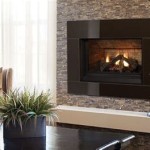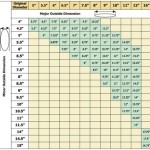Victorian Fireplace Tile: A Defining Feature of Period Homes
Victorian fireplace tile represents a significant element of interior design from the Victorian era (roughly 1837-1901). These tiles, often incorporated into fireplaces surrounds and hearths, speak volumes about the aesthetic sensibilities, social status, and technological advancements of the time. The use of decorative tile in fireplaces became increasingly popular throughout the Victorian period, reflecting both the desire for warmth and the aspiration for visually rich, ornamented homes.
The Victorian era was characterized by rapid industrialization, leading to mass production of goods, including ceramic tiles. This accessibility allowed middle-class families to incorporate previously exclusive decorative elements into their homes. The fireplace, traditionally a focal point of the home, became an ideal canvas for showcasing these affordable yet attractive tiles. The range of designs, colors, and materials used in Victorian fireplace tiles is extensive, reflecting the period's eclectic tastes and design philosophies.
Materials and Manufacturing Techniques
Victorian fireplace tiles were primarily made from earthenware or encaustic clay. Earthenware tiles were typically glazed and painted with various designs, while encaustic tiles involved creating patterns by inlaying different colored clays into the tile body itself. This technique resulted in designs that were resistant to wear and tear, making them suitable for areas of high foot traffic or heat exposure.
The manufacturing process for Victorian tiles involved several stages. First, clay was carefully selected and prepared to ensure consistency and workability. Then, the tiles were molded or pressed into shape, often using specialized machinery that allowed for uniformity and mass production. Designs were applied using various techniques, including hand-painting, stenciling, transfer printing, and the aforementioned encaustic inlay method. Finally, the tiles were fired in kilns at high temperatures to harden the clay and fuse the glaze or inlay.
The use of transfer printing was particularly significant in the production of Victorian fireplace tiles. This technique involved transferring a printed design onto the tile surface using a thin tissue paper. The paper was then washed away, leaving the design permanently embedded in the glaze. Transfer printing allowed for intricate and detailed designs to be reproduced quickly and affordably, contributing to the widespread availability of decorative tiles.
Another notable material used was Minton's China Works' "Patent Mosaic" tiles. These were a form of encaustic tile characterized by their intricate geometric patterns and durable finish. They represented a high-quality option and were often found in more affluent homes.
Common Design Motifs and Styles
Victorian fireplace tiles encompassed a wide array of design motifs, often reflecting the prevailing artistic and cultural trends of the era. Popular designs included floral patterns, geometric shapes, scenes from nature, and depictions of animals. Some tiles also featured historical or mythological figures and scenes, reflecting the Victorian interest in classical art and literature. The Aesthetic Movement, with its emphasis on beauty and harmony, also influenced tile designs, often featuring stylized flowers, birds, and geometric patterns.
Floral patterns were perhaps the most ubiquitous design element in Victorian fireplace tiles. Roses, lilies, daisies, and other flowers were commonly depicted in a variety of styles, ranging from realistic representations to stylized abstractions. Geometric patterns, such as squares, rectangles, triangles, and circles, were also frequently used, often in combination with floral or other decorative motifs. These geometric patterns provided visual interest and added a sense of order and symmetry to the overall design.
The color palettes used in Victorian fireplace tiles were diverse and varied, reflecting the changing tastes and trends of the era. Early Victorian tiles often featured muted and earthy tones, such as browns, greens, and creams. As the period progressed, brighter and more vibrant colors, such as blues, reds, and yellows, became increasingly popular. The use of metallic glazes, such as gold and silver, also added a touch of luxury and sophistication to the tiles.
Specific styles like Art Nouveau also had a strong impact, characterized by flowing lines, organic shapes, and naturalistic imagery. These tiles often showcased stylized flowers, vines, and other botanical motifs, executed in soft, muted colors. The influence of Japonism, a Western fascination with Japanese art and culture, can also be seen in some Victorian fireplace tiles, featuring depictions of Japanese landscapes, flora, and fauna.
The size and shape of the tiles also varied, depending on their intended use and placement within the fireplace surround. Smaller tiles were often used to create intricate borders or decorative panels, while larger tiles were used as focal points or to cover larger areas. The tiles were typically square or rectangular in shape, but some were also produced in other shapes, such as hexagonal or octagonal.
The Significance of Victorian Fireplace Tiles
Victorian fireplace tiles hold significant historical and cultural value, offering insights into the aesthetic sensibilities, social values, and technological innovations of the Victorian era. They serve as tangible reminders of a bygone era, reflecting the period's emphasis on ornamentation, craftsmanship, and domestic comfort. These tiles were more than just decorative elements; they were expressions of personal taste and social status, reflecting the homeowner's aspirations and values.
The presence of decorative tiles in a fireplace surround indicated a certain level of affluence and cultural sophistication. While mass-produced tiles made decorative fireplaces more accessible to the middle class, elaborate and intricately designed tiles were still considered luxury items, indicating a higher social standing. The choice of designs, colors, and materials reflected the homeowner's personal taste and sense of style, contributing to the overall character and ambiance of the home.
Beyond their decorative function, Victorian fireplace tiles also played a practical role in protecting the fireplace surround from heat damage and soot. The tiles served as a barrier between the fire and the surrounding materials, preventing the spread of flames and reducing the risk of fire hazards. The durable and easy-to-clean surface of the tiles also made them a practical choice for maintaining the fireplace surround.
Today, original Victorian fireplace tiles are highly sought after by collectors and homeowners seeking to restore or renovate period properties. These tiles add a unique touch of historical charm and elegance to contemporary homes, evoking the grandeur and sophistication of the Victorian era. The preservation and restoration of these tiles are essential for maintaining the cultural heritage of Victorian architecture and design.
Furthermore, the study of Victorian fireplace tiles offers valuable insights into the economic and social history of the period. The mass production of tiles reflects the industrial revolution's impact on the decorative arts, while the diverse range of designs and styles reflects the evolving tastes and preferences of Victorian society. By examining the materials, manufacturing techniques, and design motifs of these tiles, researchers can gain a deeper understanding of the cultural and economic forces that shaped Victorian society.
The revival of interest in Victorian design principles has further fueled the demand for original and reproduction fireplace tiles. Homeowners and designers are increasingly drawn to the intricate details and craftsmanship of Victorian-era tiles, seeking to incorporate them into contemporary interiors as a way of adding character and authenticity to their homes. This trend underscores the enduring appeal and historical significance of Victorian fireplace tiles.

Peacock Victorian Fireplace Clay Squared To Infinity

Victorian Style Fireplace Tiles For Hearth And Facade

Fireplace Architectural Tile Handmade Vintage Historic

Victorian Fireplaces Tiled Dated 1892 Victoriana

36 Awesome Victorian Fireplace Tiles S Tile

Victorian Fireplace Tile 1 2 Inch X 6 Hand Made

Victorian Burgundy Glazed Tile 4371 Fireplace

Sunset And Herons Tile Victorian Style Fireplace Tiles

Victorian Cream Glazed Tile 4075 Fireplace

Fireplace And Hearth Tiles Olde English Sydney Melbourne
Related Posts








